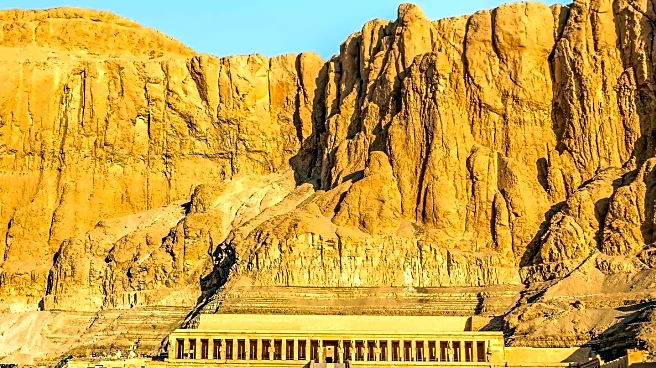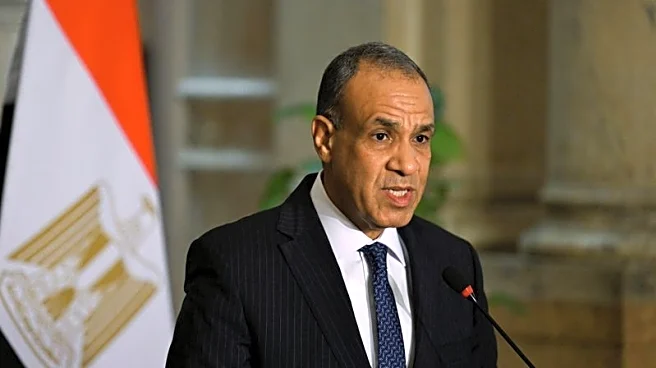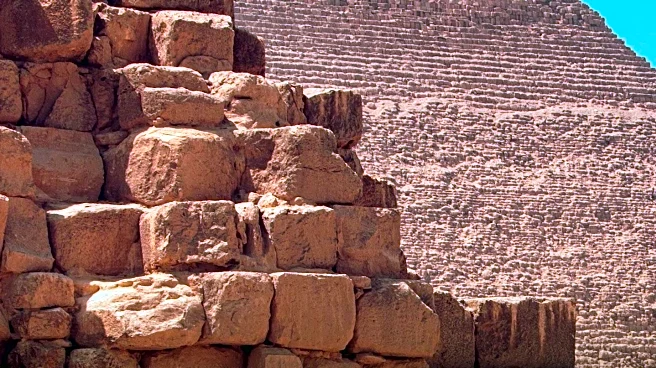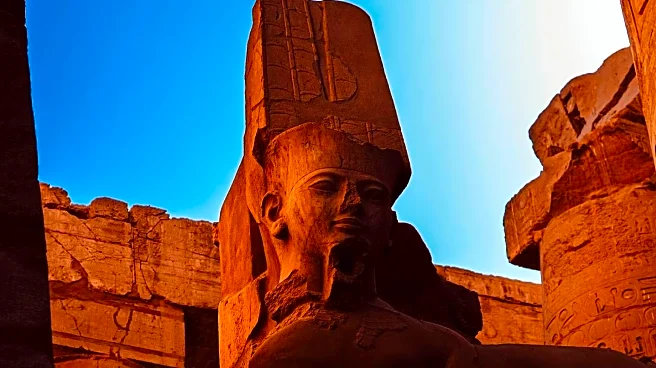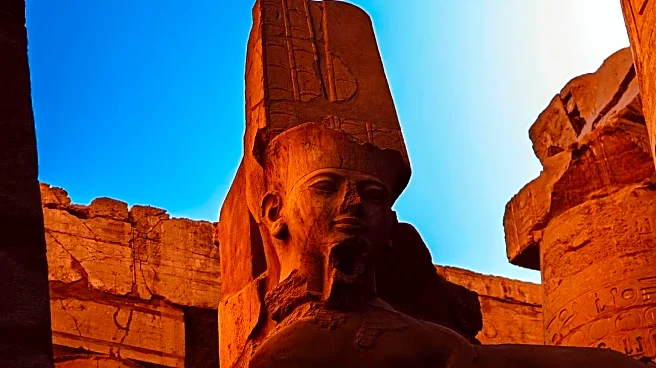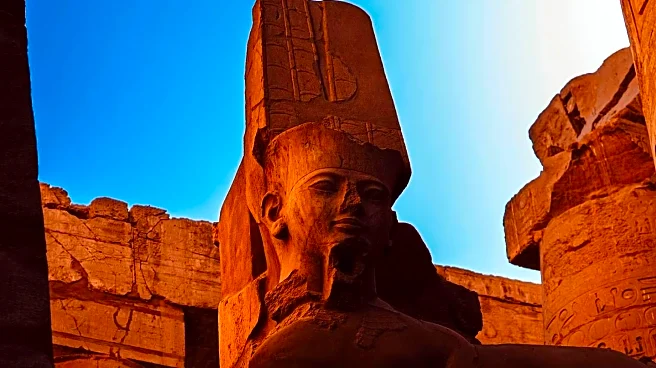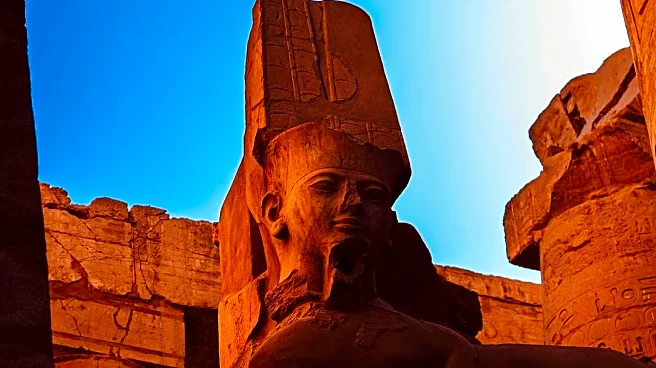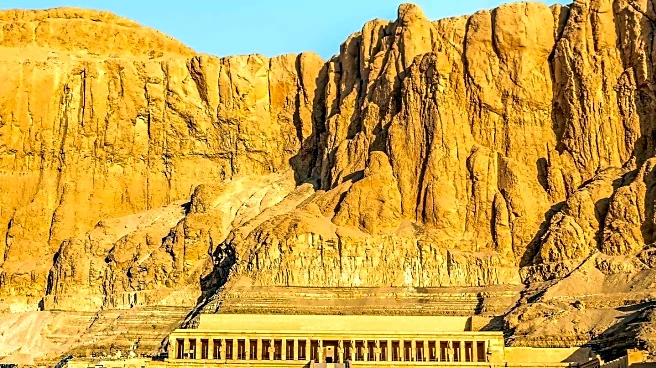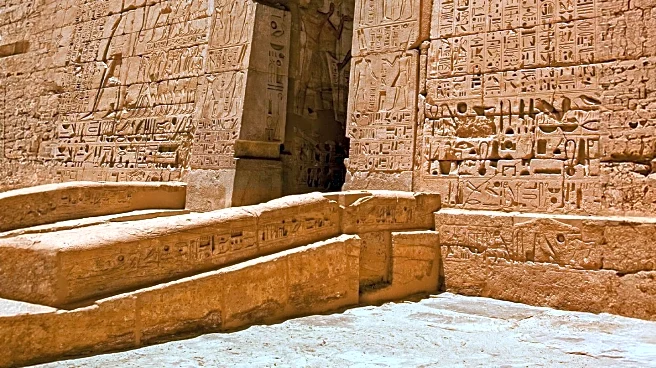What is the story about?
What's Happening?
Egypt has reopened the tomb of Pharaoh Amenhotep III in Luxor after more than 20 years of renovation. The tomb, located in the Valley of the Kings, underwent a Japanese-led restoration project that included renovating paintings and structural elements. Amenhotep III, who ruled from 1390 B.C. to 1350 B.C., was a prominent pharaoh of the 18th Dynasty. The reopening is part of Egypt's broader efforts to revitalize its tourism sector, which has been affected by political turmoil since 2011. The tomb's restoration coincides with the upcoming opening of the Grand Egyptian Museum in Cairo.
Why It's Important?
The reopening of Amenhotep III's tomb is a significant cultural and economic event for Egypt. It highlights the country's commitment to preserving its rich historical heritage and leveraging it to attract international tourists. Tourism is a crucial source of foreign currency for Egypt, and the sector's revival is vital for economic stability. The restoration of such historical sites not only enhances Egypt's cultural offerings but also strengthens its position as a leading destination for heritage tourism.
What's Next?
The official opening of the Grand Egyptian Museum near the Giza Pyramids is scheduled for November 1, which is expected to further boost tourism. Egypt's strategy to attract more visitors includes showcasing its pharaonic artifacts and promoting its historical sites. The success of these initiatives will depend on global travel trends and the country's ability to maintain political stability and security.
Beyond the Headlines
The restoration of Amenhotep III's tomb reflects broader trends in cultural preservation and international collaboration. The involvement of Japanese experts in the project underscores the importance of cross-cultural partnerships in heritage conservation. This approach could serve as a model for other countries seeking to preserve and promote their historical sites.
AI Generated Content
Do you find this article useful?
